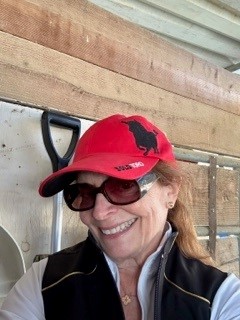No Time for a Video?

Me mucking out Maggie’s stall
What can I say? I thought I had time. I had topics prepared. I practiced in my talking head. Then things changed.
You have figured out by now that I do not have a green room or a reliably quiet space where I can plop down anytime and “do video”. If I did, I would have more polished and professional looking videos instead of the horrible videos I wish I could erase from YouTube.
Instead I am going to tell you what I wanted to talk about.
I have questions about FTX and Sam Bankman-Fried. A cryptocurrency exchange valued at $32 billion in January 2022. A company that “took off” in 2019.
How does a company go from next to nothing in value to $32 billion in three years?
How does a 30-year-old have a $29 billion net worth?
And then I thought “COVID is a metaphor for FTX”
The perfect environment had to exist for COVID to thrive and grow. To spread violently across the globe, unchecked and uncontained.
Nobody could say for sure what COVID was, where it came from or how to stop it.
And from COVID an alternate environment evolved. An incubator for risk takers evolved from orders to stay home.
Trapped inside, gamblers and gamers needed options. The need to replace betting when sports stopped. What better place than the stock market?
Gamblers flocked to Robinhood. Robinhood made investing and taking risk easy. Redditt and Wall Street Bets created meme stocks.
Then cryptocurrency spread its wings and the same gamblers were “all in” on Bitcoin, Ethereum and hundreds of other made-up tokens.
A few weeks before FTX went “all out” of business I had a conversation with the guy hanging up my neighbors Halloween lights. Somehow our brief conversation got around to the fact that he had invested $30k in crypto.
“Seriously ?” I asked. “So you are willing to lose $30k ?” “Yeah” he laughed, “I’m all in”
If the guy whose only job is to hang up holiday lights goes “all in” with crypto you know, with or without FTX, that it is going to be lights out.
It was the perfect environment, like the Bermuda Triangle (or Bahama Triangle) to create a global cryptocurrency exchange. FTX and SBF, as he is known, became the incubator drawing in millions of players, celebrities, and I’m sorry to say one well-known financial person.
As the story of FTX unfolded, there were pieces of information that confirmed my suspicions.
How does a firm get a $32 billion valuation? The valuation is fiction. Now we know that recordkeeping, bookkeeping, auditing and having a board of directors did not exist.
How does a 30-year-old have a $29 billion net worth? He doesn’t. All made up.
When someone says they are an “eccentric genius” what does that mean?
It means the genius has money. It means the genius can behave and act anyway they want to.
SBF was hailed as a “math wizard who went to MIT” Seriously? I thought you had to BE a math whiz to get into MIT.
The one attribute about SBF that I do believe is that he is great at marketing. And that is a skill.
I am also curious about the book Michael Lewis is writing, or was writing. I don’t think he has authored a book where the protagonist is arrested before the book is finished.
I wonder if the SEC is going to talk to Michael Lewis. He has had multiple conversations with SBF. Did he have any clue what was up? Any thoughts or predictions? That could be problematic.
And what about Kevin O’Leary? He was a paid advertiser as well as an investor in FTX. He was very vocal in the beginning about his support for SBF. Did his lawyers caution him to stop talking, and he listened?
And what about “effective altruism”? I must investigate this because I don’t know how it is different from regular people donating to charity.
And what happens to the charities SBF donated to in the name of “effective altruism”?
I think I have more questions than answers.
Which brings me to my last point. Charities survive because of the small donations made by individuals. Of course every charity wants the “big” donors. But what happens when FTX pledges millions of dollars to charity and then fails to donate?
- In 2021, the largest source of charitable giving came from individuals, who gave $326.87 billion, representing 67% of total giving.
- Giving in 2021 increased in every sector, with double-digit growth in gifts for arts, culture, and humanities (27.5%), public-society benefit (23.5%) and environment/animals (11%).1
Charitable Giving Statistics | NPTrust
Remember there are hundreds of ways to donate. Five dollars here, ten dollars there, it adds up.
Thank you for joining me today.

This website is for informational purposes only and does not constitute an offer to sell, a solicitation to buy, or a recommendation for any security, nor does it constitute an offer to provide investment advisory or other services by The Modest Economist LLC.
